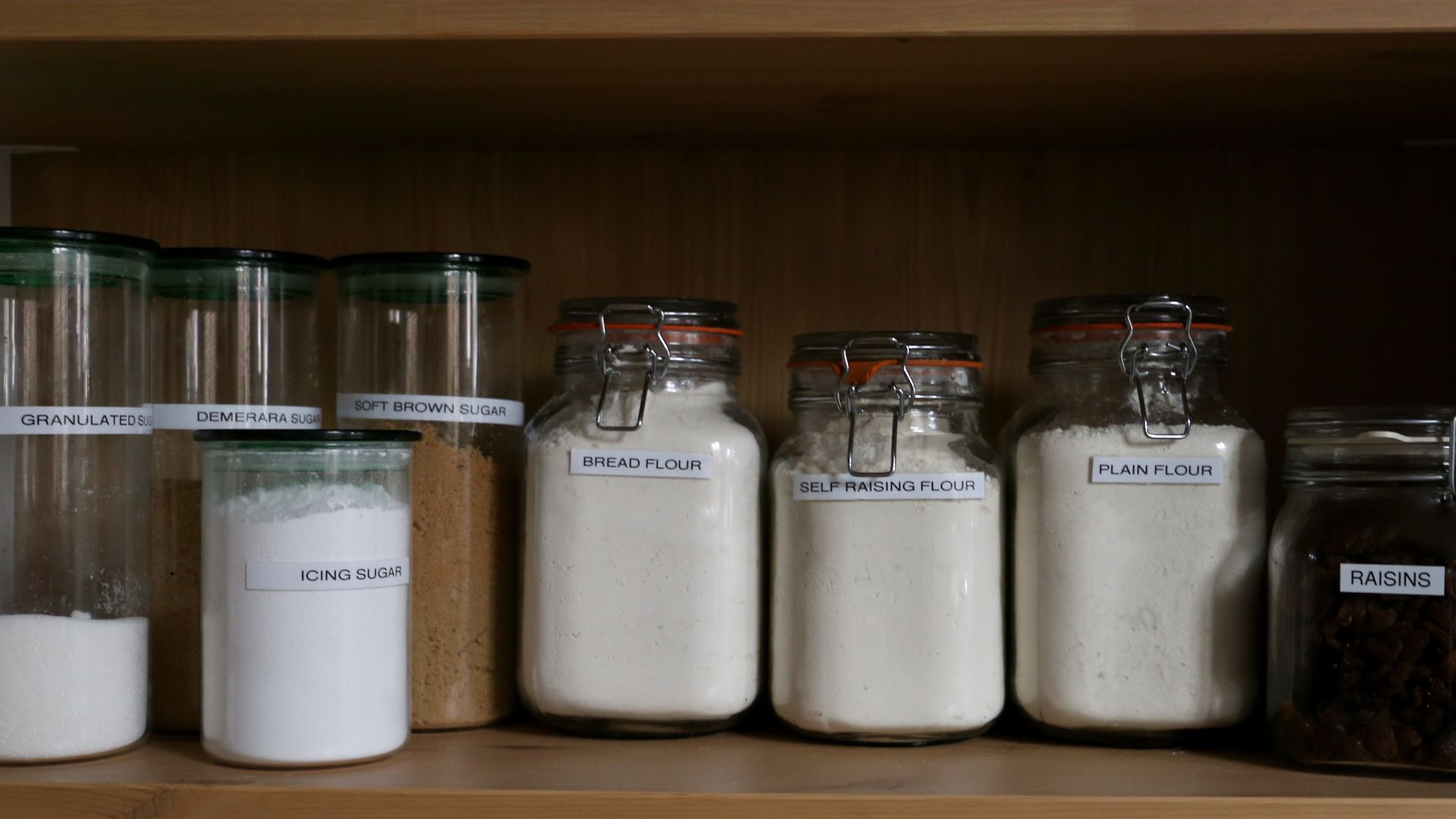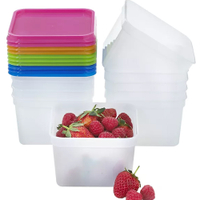7 insects that lurk in your kitchen cupboards and dry food *immediately clears out old ingredients
If you're cupboards are due a clear out you might be shocked to find these insects lurking in your ingredients the next time you reach for your flour or rice


Ingredient hoarder or not, some food products are more susceptible to attracting bugs in your cupboards than others. From flour to cereals, here are the seven most common insects to look out for in your kitchen. We've never needed a better excuse to spring-clean kitchen cupboards.
When tending to your kitchen cleaning routine, it's all too easy to skip over cleaning the inside of your cupboards and rifling through all your ingredients that may have seen better days. However, don't underestimate the importance of knowing how to clean kitchen cabinets properly.
If left for too long, many dry food items whether inside your cupboards or not can draw tiny little insects into them. Some are safe if consumed, but with others not so much we've also shared how to get rid of the pests too.
Common kitchen cupboard pests and how to get rid of them
You may have already mastered how to get rid of ants and tiny black flies, but these smaller less noticeable insects can be eating their way through your food for months before you realise. Whilst most of them are not harmful in the slightest, no one wants to share their baking ingredients with a swarm of weevils and beetles.
Here are the seven most common kitchen cupboard pests and raiders to be aware of, and most crucially the best ways to get rid of them.
1. Flour weevil

If you haven't quite figured out how to organise your kitchen cupboards properly yet, you may have a few rogue bags of flour hanging around unsealed. Should that be the case then, Ashleigh Tosh a food expert from MuscleFood.com, warns that you may have some flour weevils hanging around.
"A flour weevil is dark brown and easy to spot in your bag of flour. They can grow up to 10mm in length. If you use flour with flour weevils in, they won’t cause you any harm but it's best to get rid of any remaining flour and to check nearby packages," she explains.
Sign up to our free daily email for the latest royal and entertainment news, interesting opinion, expert advice on styling and beauty trends, and no-nonsense guides to the health and wellness questions you want answered.
So whilst you're flour may otherwise be in-date, it's best to throw it out and replace it before any cakes are made.

Ashleigh is an expert in the food, nutrition and fitness field with over ten years of experience in the industry. She uses her wealth of dietary knowledge to provide clients and businesses with nutrition-based advice as well as how to get the most out of the food we buy.
2. Rice weevil
Whilst these aren't as common to find in your home, they're normally found in grain storage plants, they are known to be drawn to beans, birdseed, sunflower seeds and dry corn.
Ashleigh says you need to look out for a reddish brown bug that's around three mm long and has red or yellow spots on its wing cover.
Should you spot one in your cupboards you should immediately clean it out and get rid of all your unsealed food as this could be contaminated. It's probably a good idea to give your kitchen a deep clean too and even use insecticide if you think it's necessary.
3. Biscuit weevil

Unlike the rice weevil, biscuit weevils are one of the most common bugs. Ashleigh says, "These bugs love bread, flour and spices. They’re around three mm long and are tiny reddish-brown insects. To get rid of them, you’ll need to find the source and deep clean the area, removing food residues, eggs, larvae and adult beetles."
4. Larder beetle
Knowing how to clean an oven properly and doing it regularly will keep these creepy crawlies away. The larder beetle is often found either around skirting boards or behind your oven where they'll make a meal out of any grease and discarded food.
"A larder beetle can be up to nine mm in length. They’re a dark colour with a light-coloured band across their backs. The best way to get rid of larder beetles is with an insecticide or heat treatment," says Ashleigh.
5. Mill moth
Similar to the rice weevil the mill moth, also known as the Mediterranean flour moth, is usually found in more commercial kitchens and businesses but can be found in the home.
Ashleigh explains that the bug feasts on cereal grains, especially flour and should you spot one then make sure to throw away any potentially contaminated food, vacuum everything and deep clean the entire area. It's a good idea to arm yourself with some kitchen cleaning hacks and tackle these smaller areas more regularly.
6. Cheese mite

I bet you can guess where this one lurks! Yes, the cheese mite is most often found in cheeses but can also be spotted in damp flours or other stored products.
"They prefer aged cheeses with natural rinds. These bugs are tiny - it’s unlikely you’ll see one. Cheese mites are harmless if you consume them," says Ashleigh.
If you do want a little piece of mind, we recommend regularly cleaning your fridge and checking seals on containers as this will work as a barrier to avoid pests.
10 Stack a Boxes Food Storage Containers 750ml, £11.99 at Lakeland
These sealed food containers offer storage for all ingredient types, and the coloured lids make it easy to identify each different item being stored.
7. Confused flour beetle
Perhaps the most whimsical sounding of the seven, the confused flour beetle is extremely similar to the flour weevil in that it has a preference for clean flour. Ashleigh explains, "The bug is around three to four mm long, is red-brown in colour and has an antenna which broadens at the tip. Adults can live for up to six months in good conditions."
Checking your stored foods shouldn't be left for your spring clean checklist, instead, you will need to regularly check your cupboards and it's also a great idea to transfer any dry foods from their packaging into air-tight containers. That is why pests will have a much harder time infiltrating them!
The best way to keep the bugs at bay is to regularly check your kitchen cupboards for any old food products and always remove or use up old flour, rice, and sugar before filling up containers with new replacement ingredients.

Emily joined woman&home as a staff writer after finishing her MA in Magazine Journalism from City University in 2023. After writing various health and news content, she now specialises in lifestyle, covering unique cleaning hacks, gardening how-tos, and everything to help your houseplants thrive.
